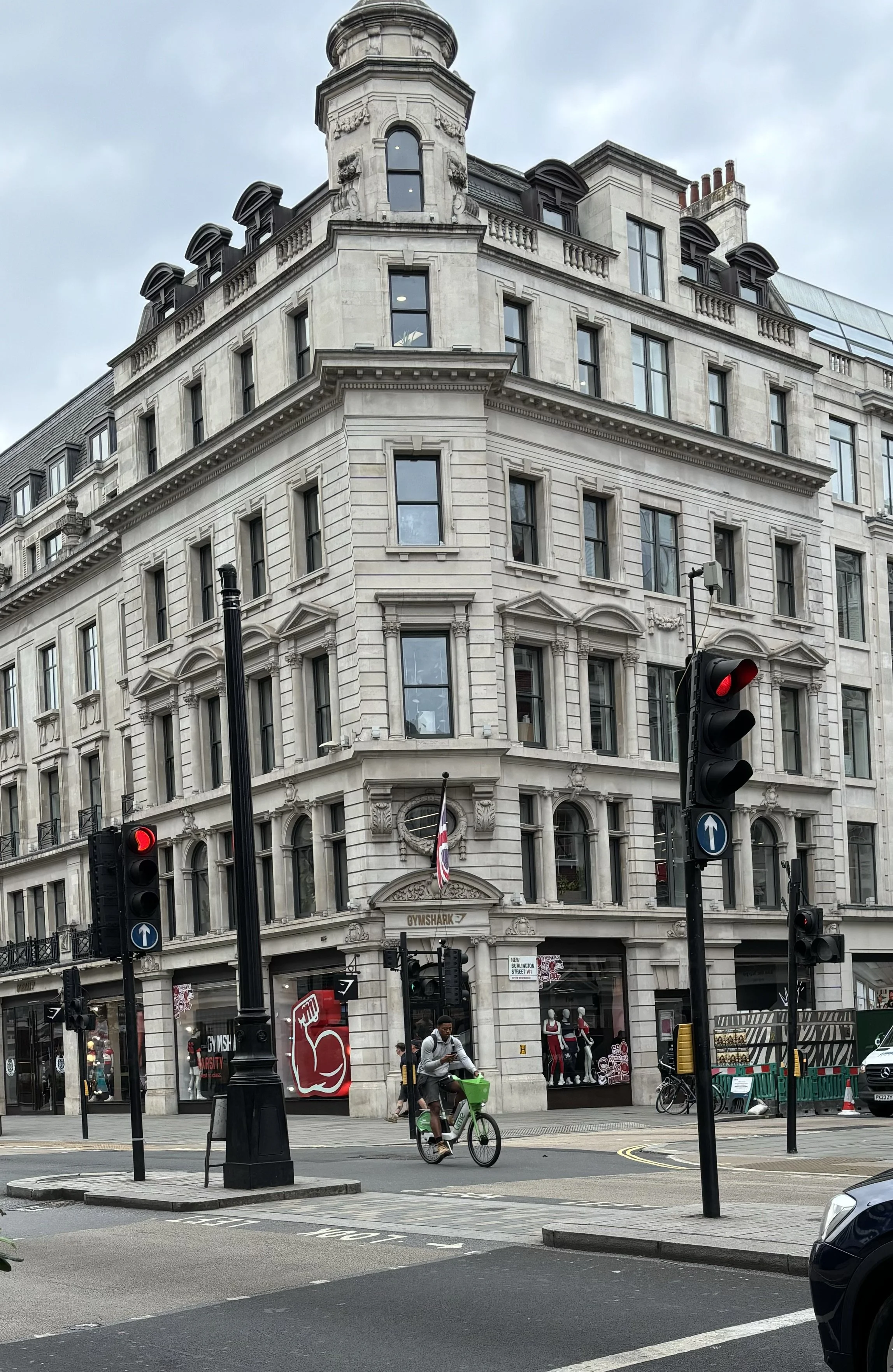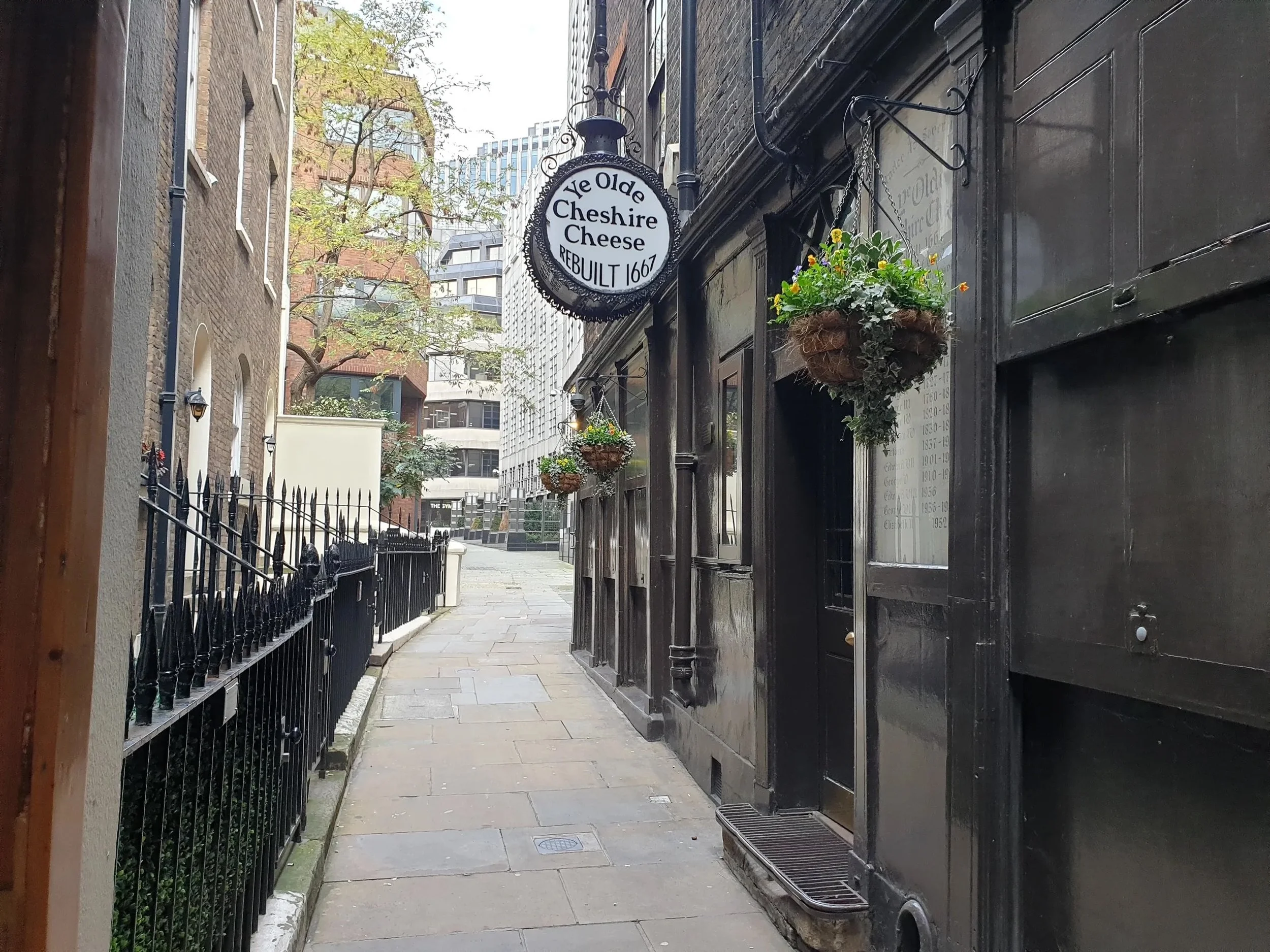It’s my first time stepping into Europe. After a ten-hour flight and a bloated stomach, I found my way to the Tube with my overstuffed carry-on in tow. I didn’t trust myself to wrangle a massive checked bag down London sidewalks. To my surprise, the Tube wasn’t as packed as I feared. I sat down, clutching my backpack, buzzing with anticipation. Forty minutes later, I arrived. Pulling out my phone to snap a photo, I caught a dirty look from a local. He knew I was a tourist.
London wasn’t what I expected. My Pinterest boards promised gothic architecture and rainy city romance. Instead, I stepped out into Bedford Square: clean Georgian buildings under an unexpectedly sunny sky. It felt unfamiliar in a way that made me question my imagination. Still, by 9:30 a.m. on a Saturday, Bloomsbury was alive. Families streamed into cafés, friends caught up over coffees (not tea). A city of stories, already in motion.
Reading A Tale of Two Cities while walking those same London streets shifted something in me. I wasn’t just observing literature or history from the outside anymore, I was participating in it. Maybe I’m not the main character of this city, but walking through its chapters gave me a new way to see myself. Maybe not as Lucie Manette, but someone adjacent to her. Someone becoming.
Lucie, the golden thread of Dickens’ novel, reminds me of who I often am in LA: tucked away in my apartment, overthinking every decision, unsure how to be alone without being lonely. She’s gentle, yes, but often passive, surrounded by suitors, her life shaped by others’ choices. I see echoes of her in myself. Should I go book shopping alone? Or stay in and avoid the discomfort? For Lucie, independence feels just out of reach. Sometimes, for me, it does too.
But that Friday morning, I chose something different.
Gymshark Flagship Store
I took myself on a solo date across Central London. The Gymshark flagship store on Regent Street had been bookmarked in my mind for years. Growing up wearing Gymshark, working out at their first-ever store felt like a full-circle moment. I booked a 7 a.m. class. When I couldn’t find the back entrance, I almost turned back. Maybe this was a mistake. But a kind employee pointed me in the right direction, and that changed everything.
I met the kindest people that morning. All of us were there to better ourselves through movement. Abbey, a data analyst at a juice company in North London. Rob, a travel agent who worked nearby. As the workout began, I found myself surrounded by others who were equally committed. It was hard, but we pushed through together.
That solo date became a quiet triumph. What once felt daunting turned into something deeply rewarding. As I walked back to my accommodation, I realized I was doing the things I wanted to do, even without anyone beside me. In real time, I was building trust with myself. That day, my confidence muscle grew. Lucie may have hesitated, but I was learning to act.
Later that day, I noticed how close everything in London feels. Not just in distance, but in energy. That density is something Dickens captured so well. Earlier in the week, we visited Fleet Street with my class, passing Tellson’s Bank, the Old Bailey, and even eating at Ye Olde Cheshire Cheese. Ten minutes from our accommodation was where Dr. Manette lived near Soho Square. Even in a group, I felt the weight of history in the cobblestone lanes. Dickens’ London was one of constant contact, where lives collided, where people from every walk of life had no choice but to share breath, space, and story. I felt that, too.
Ye Olde Cheshire Cheese: one of Charles Dickens’ favorite pubs and believed to be the inspiration for the tavern where Sydney Carton dines in A Tale of Two Cities. A inconspicuous corner of Fleet Street drenched in literary history.
But it wasn’t until I wandered alone near the Millennium Bridge, outside the art museum, that I truly understood why Dickens gave voice to so many characters, from revolutionaries to street sweepers. London doesn’t belong to one kind of person. Watching a street performer do handstands and crack jokes, I noticed children, tourists, and locals all laughing together. In that moment, I didn’t feel like an outsider. I felt part of a crowd that didn’t need to name me to acknowledge me.
Then there’s Madame Defarge. She’s always fascinated me. While Lucie waits and hopes, Madame Defarge acts. She doesn’t flinch or ask for permission. She is certain, purposeful, and relentless. While her methods seem cruel, her resolve is rooted in injustice, the Evremonde family destroyed hers. She refuses to let the past be forgotten. She becomes a force for change.
I used to think I had to choose: be gentle like Lucie or bold like Madame Defarge. But maybe there’s room for both. To hold softness without losing strength. To make space for others without erasing yourself.
““Then tell Wind and Fire where to stop,” returned Madame; “but don’t tell me.””
In London, women walk alone. They don’t need a man by their side, as Lucie needed Darnay. Even though feminism was only just beginning in Dickens’ time, I’m grateful for women like Madame Defarge, women who rejected the ideal of being quiet, pleasing, soft. Women who spoke, who acted. Because of them, women like me can live boldly today, unapologetically.
I haven’t returned to LA yet. I don’t know what will change when I do. But today, I didn’t wait for anyone. I didn’t ask permission to explore, to eat, to shop, to sit, or to write alone. I walked through the city, through the novel, and through myself. And in doing so, something shifted.
Maybe that’s what Dickens meant by resurrection. Maybe we don’t have to die to become someone new. Maybe we just need a morning to choose ourselves, and let that choice carry us forward.
London turned me into the main character. And I don’t need a plot twist to keep becoming her.

